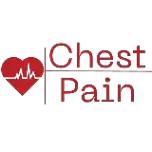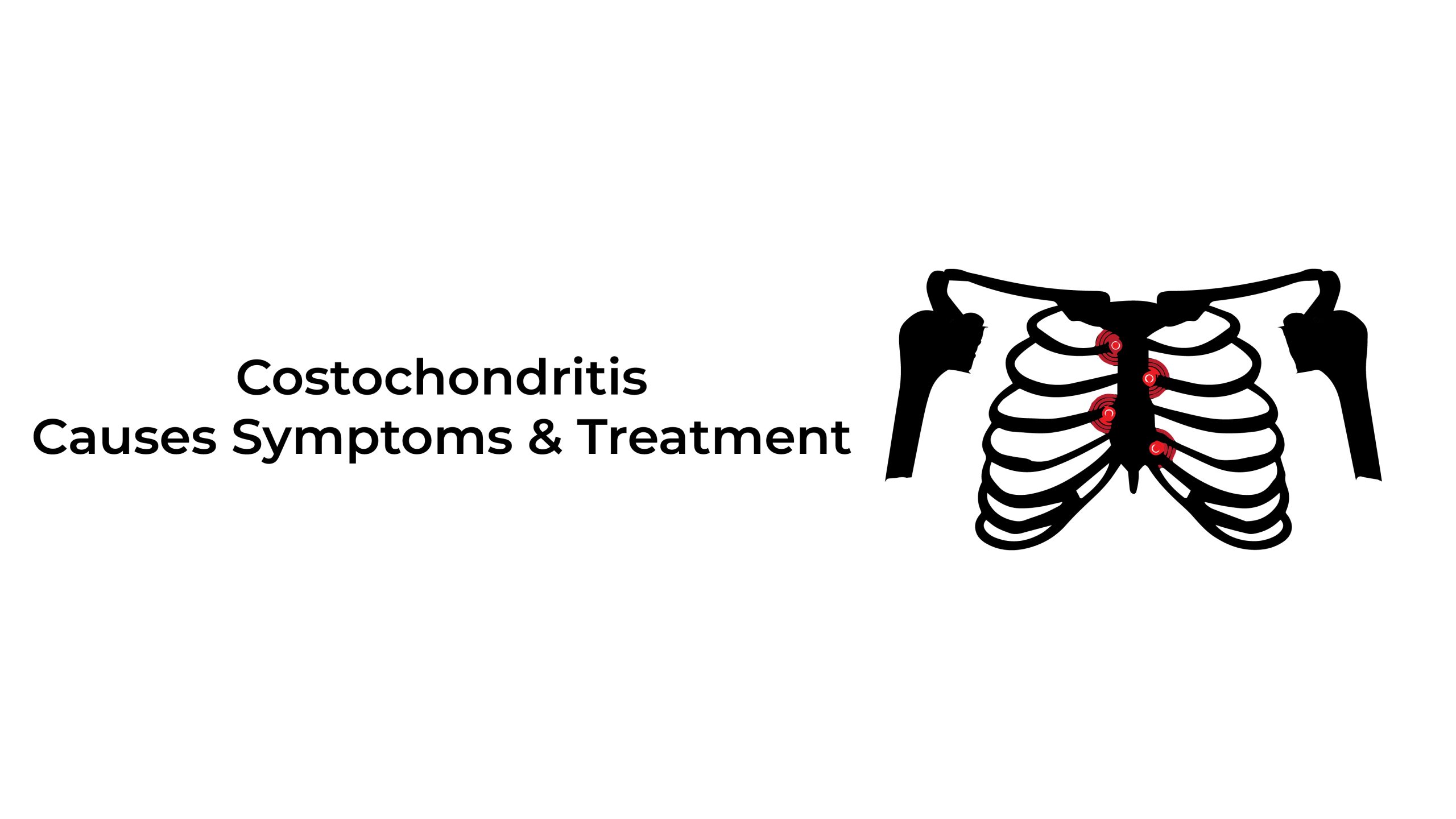Costochondritis is a cartilage swelling that joins the upper ribs to the breastbone, known as costochondral junctions. The situation leads to chest pain that is generally not considered harmful and requires no treatment. Tietze syndrome is sometimes mistaken for costochondritis, but the two conditions are distinct. They differ in the following ways:
- The symptoms of Tietze syndrome usually appear suddenly, with chest pain lying out to your arms and shoulders that remains for several weeks.
- The Tietze syndrome becomes the reason for inflammation in the painful location, where ribs and breastbone join.
Causes of Costochondritis
In most cases, the cause of costochondritis is unknown. However, certain factors may contribute to the medical concerns, including:
- Chest trauma, such as falling or being involved in a car accident.
- Physical activity, such as heavy lifting and strenuous exercise.
- Some viruses or respiratory conditions, such as tuberculosis, can result in joint inflammation.
- Severe cough
Some studies indicate that costochondritis is more common in women, particularly athletes. Additionally, you may be at a higher risk for this condition if you:
- Participate in intensive physical activities.
- Sustained a chest injury or fall.
- Prone to allergies and frequently face irritants.
Symptoms of Costochondritis
Generally, chest pain caused by costochondritis will appear after physical activity, minor injury, or a recent upper respiratory contamination. Following are the symptoms;
- A piercing pain usually appears on the left side or front of the chest and close to the area where your breastbone & ribs connect. This pain may lay out to your belly or back.
- Agonizing pain when you take a deep or cough.
- Tenderness in the rib joints when you press on them.
- Redness, inflammation, or pus discharge at the surgery site if an infection causes the condition.
Consult your physician if you experience any of the following symptoms:
- Breathing difficulties
- Temperature
- Symptoms of contamination like redness, pus, and increased inflammation at the joints of the ribs
- Persistent or worsening pain despite treatment
- Vomiting
- Perspiration
- Dizziness
While following conditions are not typically associated with costochondritis:
- An elevated temperature does not respond to fever-reducing drugs such as acetaminophen or ibuprofen.
- At the tender site, signs of contamination, like pus, redness, severe pain, and inflammation occur.
- Consistent chest pain with vomiting, perspiration, tightness in the left arm, and persistent chest pain. These symptoms may indicate a myocardial infraction.
If you are not assured about the reason for chest pain, you should go to the emergency room.
Diagnosis of Costochondritis:
Even though there is no specific test to diagnose costochondritis, your doctor will most likely ask you specific questions and perform the following tests to determine the cause of your chest pain;
- Lab tests: Most lab tests aren’t necessary to diagnose costochondritis. Still, depending on your personal health history, your doctor may order some tests to determine whether your chest pain is caused by another condition, such as pneumonia or coronary artery disease.
- X-rays and ECGs: An X-ray may be necessary to ensure nothing abnormal with your lungs. In the case of costochondritis, your X-ray should be normal. They may also recommend an electrocardiogram (ECG) to confirm your heart problem doesn’t cause chest pain. Seek immediate emergency medical attention if you encounter difficulty breathing or unusual and debilitating chest pain. Such symptoms could indicate a heart attack. By seeking medical attention as soon as possible, you can reduce the risk of complications, especially if an underlying problem is causing your costochondritis.
Complications
Treatment of the inflammation and pain usually results in the costochondritis disappearing on its own over time. If you have chronic costochondritis, you may experience pain when you exercise or participate in certain activities – even after treatment. So, you may need long-term care to ensure that costochondritis does not negatively impact your quality of life or daily activities.
The pain associated with costochondritis can be indicative of other medical conditions. When you experience chest pain, it can often indicate that you have heart or lung problems. A chest pain caused by costochondritis may be a symptom of fibromyalgia. In fibromyalgia, you may experience chest pain in addition to the following symptoms;
- Your body is experiencing pain.
- Fatigue and inability to rest
- Inability to concentrate or focus
- Depressive feelings
- Headache
Risk factors
The majority of patients with costochondritis are women and older individuals. Tietze syndrome typically affects adolescents and young adults and is equally prevalent among men and women.
Treatment for costochondritis
Costochondritis usually resolves over time, even if it remains for several weeks or more. Pain relief is the primary objective of treatment. However, specific treatment options may be considered by the doctor for immediate relief or benefit;
- Medicines: Consider the following recommendations from your physician:
- Nonsteroidal anti-inflammatory drugs (NSAIDs): Some nonsteroidal anti-inflammatory medications are available, such as ibuprofen (Motrin IB) and naproxen sodium (Aleve). However, your doctor may prescribe more potent versions of these nonsteroidal anti-inflammatory drugs. However, certain reactions may occur, such as; damage to the stomach lining and renals.
- Narcotics: If your pain is severe, your physician may recommend a medication that contains codeine, like hydrocodone/acetaminophen (Vicodin, Norco) or oxycodone/acetaminophen (Tylox, Roxicet, Percocet). The use of narcotics can lead to addiction.
- Antidepressant: Amitriptyline is a tricyclic antidepressant typically used to deal with chronic pain – especially if it keeps you awake at night.
- Anti-seizure medications: The epilepsy medicines gabapentin (Neurontin) has also effectively dealt with chronic pain.
- Physical treatment: Physical treatment includes stretching activities to relax the chest muscles and get pain relief.
- Nerve stimulation: Transcutaneous electrical nerve stimulation (TENS), a device sends a weak electrical current via adhesive patches near the pain site. The wind may disrupt or mask pain signals, stopping them from reaching your brain.
- Surgery: If other treatments do not work, your physician may suggest inserting numbing medicines and a corticosteroid directly into the aching joint.
- Home treatment: Your doctor can do little to treat your costochondritis, which can be frustrating. You might feel more comfortable by taking self-care measures.
These include:
- Nonsteroidal anti-inflammatory drugs (NSAIDs) are unprescribed pain relievers.
- Using ibuprofen (Advil, Motrin IB, etc.) or naproxen sodium (Aleve, etc.) may be beneficial.
- You may also use ice or heat. Place a heating pad or hot compress on the painful locations many times a day. Heat should be kept at a low temperature, and ice may also be beneficial.
- Do not engage in activities that exacerbate your pain.
Preventions
There is no single cause of costochondritis. Some reasons can be prevented, while others cannot, such as; you may be able to avoid exercising too much or coughing too hard. However, you may be unable to prevent costochondritis if you sustain an injury to your chest during a car accident.
References:
- https://www.webmd.com/pain-management/costochondritis
- https://www.healthline.com/health/costochondritis#causes-and-risk-factors
- https://www.mayoclinic.org/diseases-conditions/costochondritis/diagnosis-treatment/drc-20371180
- https://www.mayoclinic.org/diseases-conditions/costochondritis/diagnosis-treatment/drc-20371180

